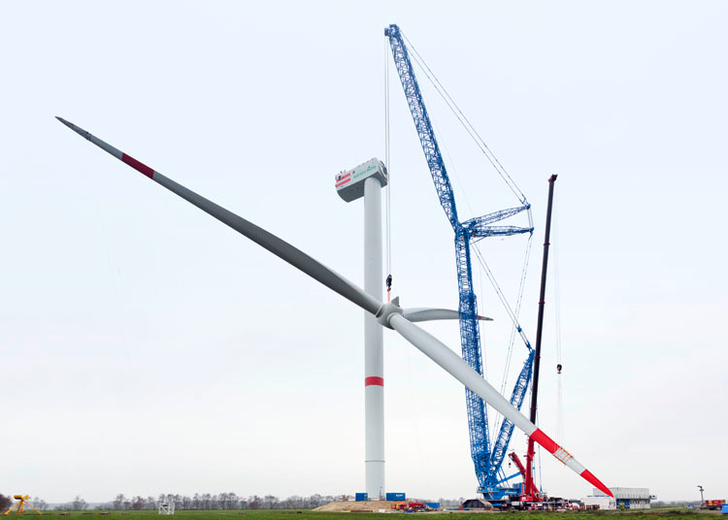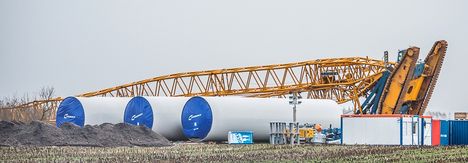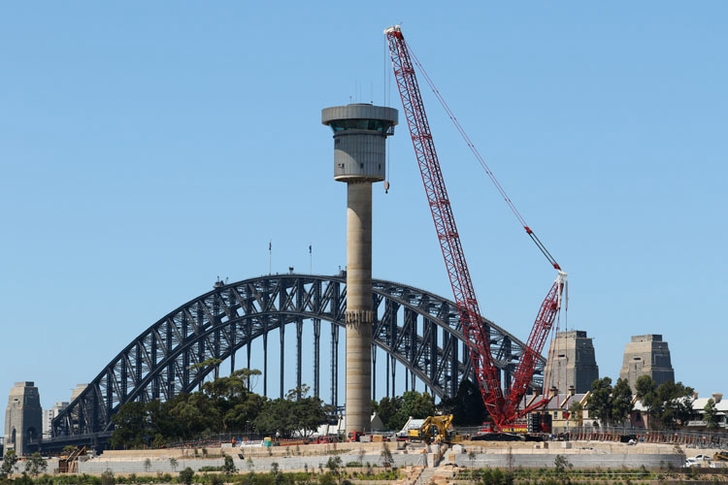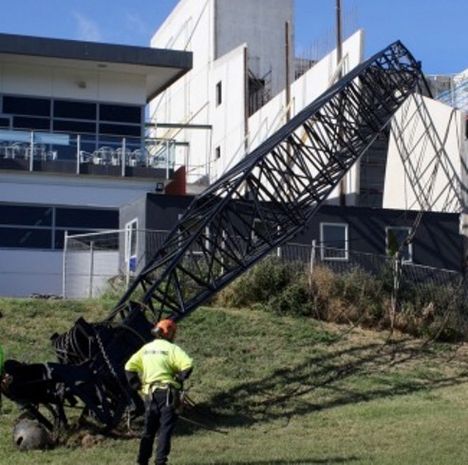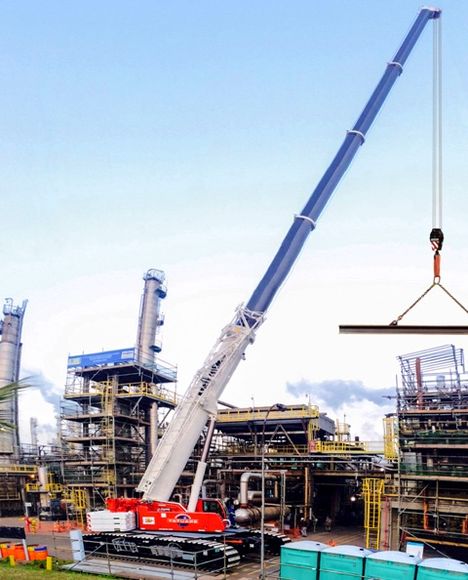Crane service provider Felbermayr used a Liebherr LR 11000 crawler crane with Power Boom to erect a 6.2 megawatt wind turbine at an onshore test centre for off shore wind farms in Neuenwalde, Germany.
The 1,000 tonne capacity LR 11000 was set up in PDW3B configuration, which consists of 78 metre Power Boom, a 42 m derrick boom and a 66 m luffing jib. The counterweight consisted of 435 tonnes of suspended ballast, 50 tonnes of central ballast and 210 tonnes on the superstructure. Hook height was 138 m.
Five steel sections make up the turbine tower, each weighing up to 174 tonnes. Its hub height is 124 m. The lower section of the machine housing weighed 194 tonnes. Günther Wimmer, from Felbermayr’s project division, said, “This didn’t include the technical components, such as the transformer, gearbox and drive train, which weighed up to 73 tonnes each and had to be lifted into position separately.”
The turbine tower was fitted between September and November, while the assembly of the rotor took place in December 2014. The three rotor blades, which each measured 74.4 m long, were fitted onto the star-shaped head while on the ground. The total weight of the rotor was 175.4 tonnes. It was lifted to a height of 124 m and fitted onto the nacelle.
Wimmer said, “Once you think about the fact that the head is 152 metres in diameter, it soon becomes clear just how skilled the crane driver and assembly workers had to be.”
In total, 42 heavy transporters were used to transport the LR 11000 components to site. Wimmer said, “The crane came straight from being used on a construction site in Romania. After the initial leg on the road, the parts of the crane were loaded onto a cargo ship in Constanta and transported to Bremerhaven, Germany. The components were then shuttled to the construction site 42 kilometres away. It took four transport units six days to do it.”
